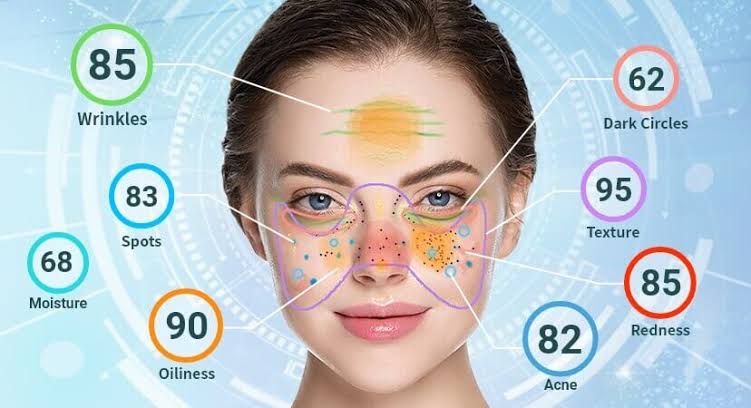For a vibrant and glowing skin, you need to stick to your daily care routine. However, it is also very important to use products suitable for your skin type while doing skin care. By learning your skin type with skin analysis , you can benefit from care applications effectively and contribute to the delay of the effects of aging. So, what is skin analysis and how is it done? Here are the things you wonder about skin analysis…
What is Skin Analysis, What to Look for?
Facial skin analysis , performed with the help of computer under the control of a competent beautician , helps to determine your skin type and detect your skin problems. With this application, which is much more effective than simple tests you can do at home, problems such as wrinkles, sagging, skin spots, porous appearance, blackheads and acne can be closely evaluated. As a result, treatments can be planned for the needs of your skin
How is Skin Analysis Performed?
Skin analysis can be done by different methods. Online skin analysis, which can also be defined as photo skin analysis, is one of the popular methods. In this method, the photo of your face is evaluated with artificial intelligence supported technologies. However, it is necessary to apply to professional centers for detailed skin analysis. Skin analysis places have professional equipment. Before the analysis, the expert will ask you some questions. Then, it examines your skin closely with the skin analysis device . The purpose of this procedure is to determine your skin type and identify existing problems and create a personalized treatment plan.
How Do We Know Your Skin Type?
Knowing your skin type helps you both when choosing cosmetics and make-up products and when sorting skincare . Skin types can be examined in five groups:
Dry skin: Dry skin with low moisture content often has a dull appearance and small pores. Sensitivity and exfoliation are among the most common problems experienced by dry skin. The effects of aging may begin earlier in dry skin.
Normal skin: Normal skin with balanced moisture content has a smooth appearance. In normal skin, the skin tone is usually even, the pores are of normal size.
Oily Skin: Oily skin looks shiny, oily and rough because the skin produces excess oil. Pores in oily skin are usually large and prominent. Problems such as acne and blackheads are more common in oily skin.
Combination Skin: Combination skin features oily skin on the forehead, nose and chin area called the T-zone, and dry or normal skin on the cheeks. Acne, blackheads in the T-zone in combination skin; In dry areas, problems such as flaking can be seen.
Sensitive Skin: Sensitive skin, which is thinner and more allergic than other skin types; It is more sensitive to external factors such as sun and air pollution. sensitive skin; may be prone to skin problems such as irritation, redness, itching
How to Perform Skin Type Analysis at Home?
You can apply to a specialist for skin type analysis , or you can get an idea with a simple test at home. For the skin type test you will do at home, first wash your face, dry it and wait for an hour. After an hour, rub a dry and clean tissue all over your face. You can see how much oil it is by holding the napkin you used for the test up to the light. If the napkin is not or very lightly oiled, your skin is most likely dry. If the areas where the forehead and nose areas touch are oily, your skin is normal or mixed, and if the entire napkin is oiled, your skin can be considered oily.

